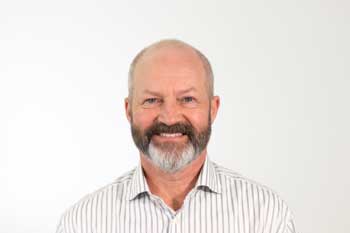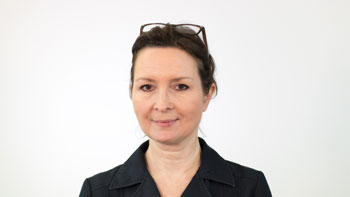 Alan Murray
Alan Murray
Technical Co-ordinator – Civils/Landscape/Structural
Tell us a bit about your role
I am the NBS Technical Authoring Co-ordinator with overall responsibility for all civil, structural and landscape architecture technical content.
I use the experience and skills that I gained through practice to author content that supports projects covering a wide range of disciplines and scales.
What do you enjoy most about your role?
I particularly enjoy dealing with a variety of subjects, producing relevant and useful information to improve and expand upon the content which we produce to support civil engineers, structural engineers and landscape architects.
Where did you work before joining NBS?
By profession I am a Chartered Civil Engineer. I have 44 years’ experience in design, specification, project management, site supervision, business management and business development across all disciplines in both the public and private sectors.
I have designed structures using most conventional building materials and processes, and have either personally designed or led design teams in producing overall building and structure designs, as well as preparing technical specifications which would be used as contract documents. I have also produced reports on building or structural defects and proposed appropriate remedial actions.
I have worked for contractors and consultants on a diverse range of projects, including earthworks, site remediation, tunnels, power stations, multi-storey reinforced concrete framed buildings, steel framed structures and masonry buildings.
When you were in practice, how did you feel about writing specifications?
Specifications are a fundamental part of contract documentation and are essential for the communication of information about any proposed construction project. When in practice, I did not treat writing specifications as a separate task, but rather as an integral part of the design process.
The Technical Team who author NBS specification products have diverse backgrounds and several years of experience working in the industry producing their own specifications.
 Roland Finch
Roland Finch
Technical Co-ordinator – Prelims
Tell us a bit about your role
I am the principal author for NBS Preliminaries and Project Management content. That means keeping up to date with all the various construction contracts and all their associated documents.
I have also written many articles on a variety of health and safety topics, and contribute to a variety of journals and other information services such as ‘Croner’s Management of Health & Safety’. I also wrote the ‘NBS Guide to Tendering for Construction Projects’ and co-authored ‘BIM for Construction Health and Safety’, both published by NBS.
What do you enjoy most about your role?
I particularly enjoy finding solutions to subscribers’ problems and sharing my expertise and experience with others.
Where did you work before joining NBS?
I am a Chartered Quantity Surveyor with over 35 years’ construction industry experience in both the public and private sectors. I have worked on large and small projects all over the UK and beyond.
How can specifications help to reduce risk?
There are different types of risks in construction projects; these can be expressed in terms of time, cost and resources. A clear specification can help everyone involved in the project to identify those risks, and make sure that they are allocated to the people best equipped to manage them.
There are different types of risks in construction projects; these can be expressed in terms of time, cost and resources.
 Michelle Lucarelli
Michelle Lucarelli
Architect/Chief Editor
Tell us a bit about your role
I joined NBS 11 years ago, initially as a Technical Author, before taking up the Chief Editor post last year. I now lead the editorial team, setting and maintaining quality standards for written technical content of NBS specification tools. We work alongside the whole technical team, looking at relevance, currency, robustness, risk and usability of NBS specification tools. We also contribute to NBS’s wider content strategy.
What do you enjoy most about your role?
Working with the other construction professionals in the technical team: sharing thoughts, ideas, and conclusions on how to offer meaningful products for the construction industry. Healthy debate backed by research and evidence, investigation, listening to customer (and non-customer) views, testing, and drawing on both experience and fresh ideas are all key.
Where did you work before joining NBS?
I spent 18 years in large local government multi-disciplinary construction design teams, working on projects from inception to completion, having the fortunate opportunity to engage with all parties throughout the process, including project sponsor, client, design team, contractor, end-user and maintenance team. Schemes included social and commercial standard and assistive housing, pre-school, primary, secondary and tertiary education provision, listed civic buildings, multi-purpose community provision, etc. using traditional, direct labour, design and build, and partnering contracts.
Can specifications help to achieve design intent?
Yes, definitely. The idea that specification can lock down the means of manifesting that intent is a basic premise: even in the most collaborative of scenarios it’s still possible to misinterpret an idea, and so reducing ambiguity is vital. The skill is in allowing the specification to be accessible (it needs to be understood by the whole chain) as well as flexible (change happens), and when it is well done, it should inspire confidence in all parties.
We work alongside the whole technical team, looking at relevance, currency, robustness, risk and usability.
 Donald Duncan
Donald Duncan
Technical Co-ordinator – Building Envelope
Tell us a bit about your role
I joined NBS in September 2013, and am the Technical Authoring Coordinator responsible for the team covering the Architectural Exteriors content. My own content responsibility focuses on masonry systems, products and related sections.
On a typical day, I will attend stand-up meetings to discuss and plan upcoming content releases, support team members with content authoring and quality assurance, and coordinate work and resolve issues with other teams in the business.
What do you enjoy most about your role?
I naturally gravitate towards simplifying the complex. I enjoy finding innovative solutions to complex problems, specifically those affecting customers; also helping others to understand internal tools and processes, and exploring better ways of working collaboratively.
Where did you work before joining NBS?
I studied Architectural Technology at the Robert Gordon University in Aberdeen, including six months of study in Copenhagen, Denmark.
My first architectural role was in private practice in Edinburgh in 2004. For seven years I worked on a wide range of projects, from small domestic extensions to multi-million-pound nursing homes and flatted developments. In 2013 I started my own practice, managing projects from inception to completion for third-sector and domestic clients.
When you were in practice, did you experience any problems when writing or producing a specification?
My experience of working with specifications on multi-disciplinary projects in practice has been invaluable for my work at NBS. Typical specification-related problems include lack of clarity and specification structure, leading to inappropriate product substitution due to ‘value engineering’, and severely limited time being allowed for composing specification data. In practice I found that using NBS products provided solutions to these problems, so I am proud to now be contributing to this valuable resource.
The development of clear and concise specifications and drawings maximises the potential for a building's services to operate in accordance with the design intent.
 Bill Clark
Bill Clark
Technical Co-ordinator – Engineering Services
Tell us a bit about your role
Understanding the difficulties faced by contractors when receiving construction information (which often contains duplication, contradiction, superfluous information, or is incomplete) enables me to provide detailed clause content and guidance. This is based on research of standards, codes of practice, etc., with the aim of creating robust technical content.
My aim is to simplify the task for the specifier when creating project specifications, helping them to achieve the necessary balance between including essential content, and ensuring that it is clear, up to date and consistent.
What do you enjoy most about your role?
Training and coaching staff.
Where did you work before joining NBS?
A Regional Electricity Distributor before working in a general hospital and then with a consultancy.
What one piece of advice would you give to someone new to writing specifications?
Having been responsible for designing, maintaining and managing the budget of substantial property estates, I’d advocate giving priority to designing systems that can be easily built, maintained and are cost-effective to operate throughout the lifecycle of the building. The development of clear and concise specifications and drawings maximises the potential for a building’s services to operate in accordance with the design intent. Production of design information, including specifications, is something that benefits from standardisation (in the form of an office master and easily accessible design office practice notes) and an iterative approach to improvement, using lessons learned from previous projects to improve upon the next.
As the shortage and quality of skills within the construction industry becomes increasingly severe, the need for an appropriate level of inspection becomes ever more essential, both during the build process and at handover in order to protect the client’s and/or the building user’s interests, as does the importance of enforcing the contractor to comply with the specification.
My aim is to simplify the task for the specifier when creating product specifications.
 Phil Simpson
Phil Simpson
Technical co-ordinator – Building Internals
Tell us a bit about your role
I joined NBS in 2015 as a Technical Author within the Architectural Interiors team. I am responsible for sections including fire protection, doors, stairs, sanitaryware, and paint.
A typical day involves talking to customers who have specification queries, researching the subjects and checking any standards that may have been changed, and challenging the existing software, looking at ways that it can be improved for the user.
What do you enjoy most about your role?
I like to lead from the front and enjoy being part of the team with answers to the problems, and getting things done. One of the reasons I wanted to join the NBS team was to be part of something that the industry respects.
I particularly enjoy carrying out research into new technology and new developments in construction industry products and practices, meeting manufacturers and getting a different perspective on NBS products.
Where did you work before joining NBS?
Before joining NBS I worked in private practice for 15 years as Senior Technician and Associate. I specialised in education and healthcare projects, with involvement in design, technical detailing and project management.
During that time I developed the architectural practice by looking at marketing and public relations, expansion, practice policies and procedures.
What do you think future specifications will look like?
Future specifications will become simpler and more intelligent. They will link seamlessly between models; information will be inputted once and seen everywhere. I think it will become one of the most important parts of BIM: the link between the brief, the contract, the drawings and the build phase will be one. It should be the document that forms part of the Asset Management tools and the next phase of how the building is used, how the assets are managed and how the building can be disposed of if required.
Future specifications will become simpler and more intelligent. They will link seamlessly between models.


